My Chinese Heart | Integrating Traditional Paper-Cutting, Modern Art
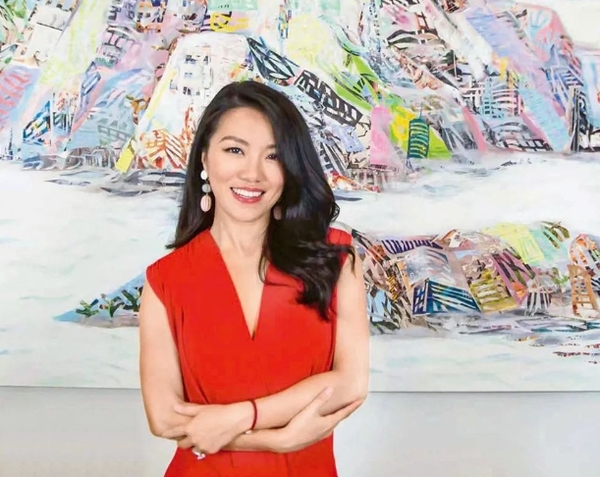
There was little doubt Chen Sijia would be anything other than an artist. She comes from a family of artists, who make traditional Chinese calligraphies and paper-cuts. Chen now resides in the United States, where she is a multidisciplinary visual artist, who concentrates on public art, large-scale paintings and art installations. Chen also helps promote international cultural and artistic exchanges.
With a history of more than 1,500 years, the traditional Chinese art of paper-cutting was included in UNESCO (United Nations Educational, Scientific and Cultural Organization)'s Representative List of the Intangible Cultural Heritage of Humanity in 2009. Throughout the years, overseas Chinese have been dedicated to promoting the modernization of this traditional art form, by integrating modern art concepts with traditional paper-cutting, and by exploring more possibilities for the traditional art form. Chen is one of those artists.
In 2009, after she received a bachelor's degree in fine arts, majoring in painting, from Guangzhou Academy of Fine Arts, in Guangzhou, in south China's Guangdong Province, Chen moved to the US for further studies. In 2011, she received a master's degree in fine arts, majoring in painting, drawing and sculpting, from Tyler School of Art and Architecture, Temple University, in Philadelphia.
Now, Chen resides and operates her principal studio in Los Angeles, California. Her commissioned public works include: Bloom, in North Kansas City, in Missouri; Arbor, in Claremont, California; Voyage Beyond, in Shantou, in Guangdong Province; and SWA, and Tea and Tree, both in Jieyang Chaoshan International Airport in Jieyang, in Guangdong.
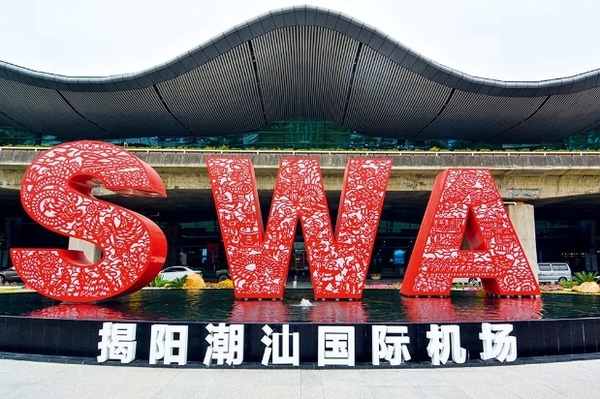 |
| Chen Sijia's art work, SWA, in Jieyang Chaoshan International Airport |
Art Fusion
Chen Sijia is a native of Shantou. Her father, Chen Chuansheng, is a Chinese arts and crafts master, and a provincial-level inheritor of the intangible cultural heritage of paper-cutting. Under her father's influence, Chen Sijia forged an indissoluble bond with art, and she learned the art of paper-cutting as a child.
In 2016, Jieyang Chaoshan International Airport publicly solicited art works to enhance the cultural atmosphere of the airport. That made Chen Sijia think about other possibilities for "expressing" paper-cutting beyond its traditional form.
While conceptualizing her work, Chen Sijia thought of the International Air Transport Association code, SWA, of Jieyang Chaoshan International Airport. "For me, SWA is the 'code of home,'" she says.
Chen Sijia collaborated with her father on the project. She was responsible for creative ideas, while her father was responsible for the paper-cutting; thus, together they created an artistic style of "both traditional and modern."
The art work, SWA, uses the three letters as the carrier, and the paper-cutting as the means of expression. It embodies the historical and cultural elements of the Chaoshan area, and it depicts more than a dozen representative folk activities in the region. Over time, SWA became a landmark of Chaoshan, and a must-visit attraction for tourists after they land in Chaoshan.
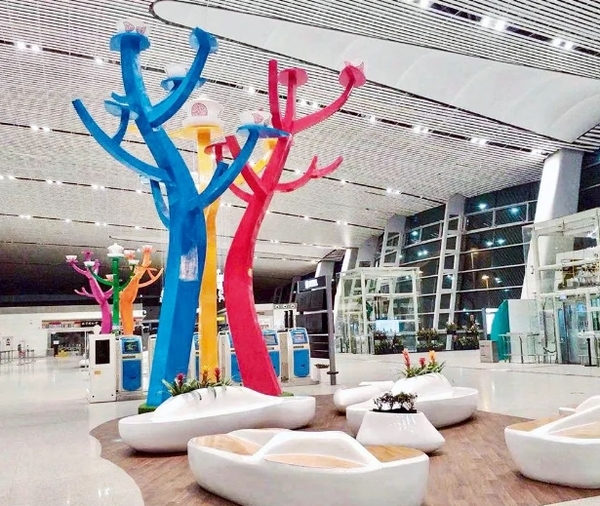 |
| Tea and Tree, in Jieyang Chaoshan International Airport |
When asked about the design concept, Chen Sijia says, "Chaoshan is a famous hometown of overseas Chinese. Jieyang Chaoshan International Airport has many international flights, and domestic and foreign passengers, and it is the first stop for many overseas Chinese who are returning to their hometowns. The airport needs distinctive regional cultural characteristics to show the culture and tradition of Chaoshan. However, if it only shows tradition, it is incompatible with the modern atmosphere of the airport. So, we need to combine modernity with tradition, culture with art.
"Cooperation with my father opened my mind to the possibility of combining paper-cutting with modern art. I also came to understand paper-cutting could be used in different scenes and art works more creatively. I had a deeper feeling for the charm of paper-cutting," Chen Sijia adds. Since then, Chen Sijia has been adding paper-cutting elements to her works; during the process, she has been forming a deeper bond with her hometown, and with its culture.
Innovation and Communication
"My work is an ongoing exploration of cultural heritage, documentation, and experimentation. Paper-cutting, a traditional folk art that has been practiced in my family for multiple generations, is the unifying element I employ throughout my canvas, sculpting and public art works," Chen Sijia says.
She has adopted innovative measures to integrate traditional paper-cutting with modern art. Compared with the traditional paper-cutting material, red paper, the material commonly used by Chen Sijia, is considerably more diverse. "Materials are not only a carrier, but also a part of the artistic expression. Therefore, materials also need to be related to the contemporary times, and they need to be closely related to the theme of art creation," Chen Sijia explains.
In terms of design, traditional paper-cutting emphasizes "continuity" and "creating on one sheet of paper;" yet, Chen Sijia likes to make collages and stack paper-cuts by using different materials.
She also pays great attention to the audience's interaction with and emotional connection to her works, and she hopes the audience will participate in the creation. "I want my work to be relevant to the audience. When the audience integrates into the process of artistic creation, it is easier for them to have a sense of intimacy with the works, and to feel more from the works," she says.
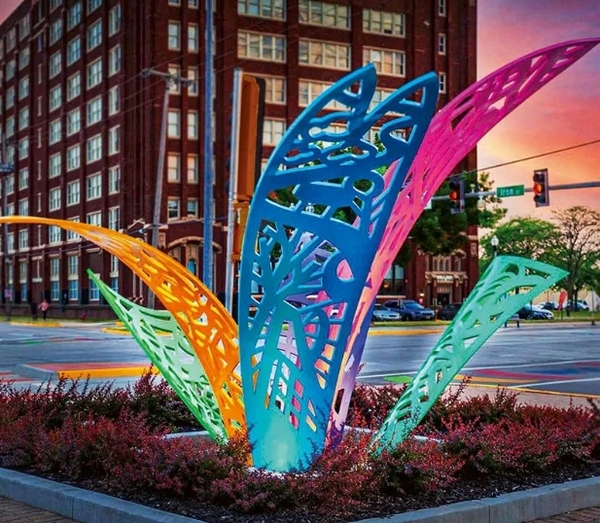 |
| Bloom, in North Kansas City, the US |
While she was designing Bloom, in North Kansas City, Chen Sijia solicited opinions from locals, who she asked to explore the "urban memory" of the city in their hearts. Then, she created the images of the bridge and bee (a local mascot), and other images, in the form of paper-cutting.
"This is also the process of promoting paper-cutting, which can cause locals to have a sense of affinity for the works and paper-cutting. Paper-cutting is not an art far away in the East, paper-cutting can also be closely related to them," Chen Sijia says.
She promotes the art of paper-cutting to Americans in many ways. For example, in addition to giving lectures and workshops, she combines paper-cutting with daily necessities, and she develops derivative products for the public, so the public can gradually come to understand the art of paper-cutting through the process of using the products.
"The art of paper-cutting needs to be protected and inherited. I hope people can understand, and pay attention, to this art through my works. Only with love can there be protection and inheritance," she says.
Recording
It has oft been said art comes from life. Chen Sijia often integrates her own life experiences into her works. As she has moved far from her hometown, she pays special attention to the issues of migration, emigration and immigration. She likes to explore the diversity and inclusiveness of different regions, and she reflects on how to better promote mutual learning among civilizations.
In her series, Across Mountains and Rivers, Chen Sijia uses paper-cuts as a visual language to talk about her experiences as a first-generation immigrant. "I employ paper-cutting to create compositions that emulate and deviate from traditional Chinese painting, and that tells the story of my immigrant journey, and of those with shared experiences," Chen Sijia says.
"I incorporate materials of personal significance as media, including immigration documents, immigrant-owned restaurant menus, and magazines' advertisements. These materials transform, through the application of paper-cutting, into buildings, vehicles, rocks, trees, and they layer on top of each other to create mountains and natural formations across expansive landscapes." Visitors often stop, for lengthy periods, in front of Chen Sijia's works. It is clear to observers those people are deeply pondering her creations.
During an art exhibition, a visitor caught the attention of Chen Sijia. "He stayed at my booth for a long time. The menu of the restaurant in my artwork reminded him of the Chinese restaurant where he and his family often dined. He said the restaurant owner was always busy serving customers. It gave him a deep respect for the owner, and for Chinese people. This artwork also brought together many of his memories of the Chinese community, and the descendants of immigrants." Chen Sijia recalls.
This is what she constantly pursues — letting the works express her thoughts, and bring feelings to others. "What is more important is how the work relates to current society, whether it can reflect the artist's thinking, criticism and suggestions, and whether it can have a deep connection with the audience," Chen Sijia says.
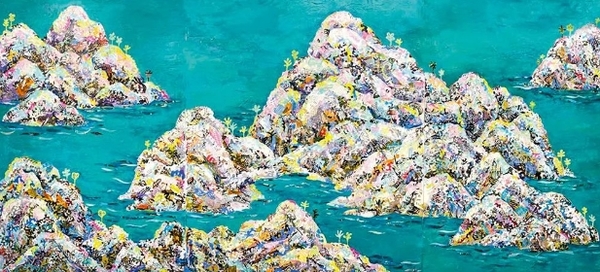 |
| Across Mountains and Rivers |
Photos from Interviewee
(Women of China English Monthly April 2024)
Please understand that womenofchina.cn,a non-profit, information-communication website, cannot reach every writer before using articles and images. For copyright issues, please contact us by emailing: website@womenofchina.cn. The articles published and opinions expressed on this website represent the opinions of writers and are not necessarily shared by womenofchina.cn.
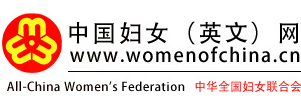
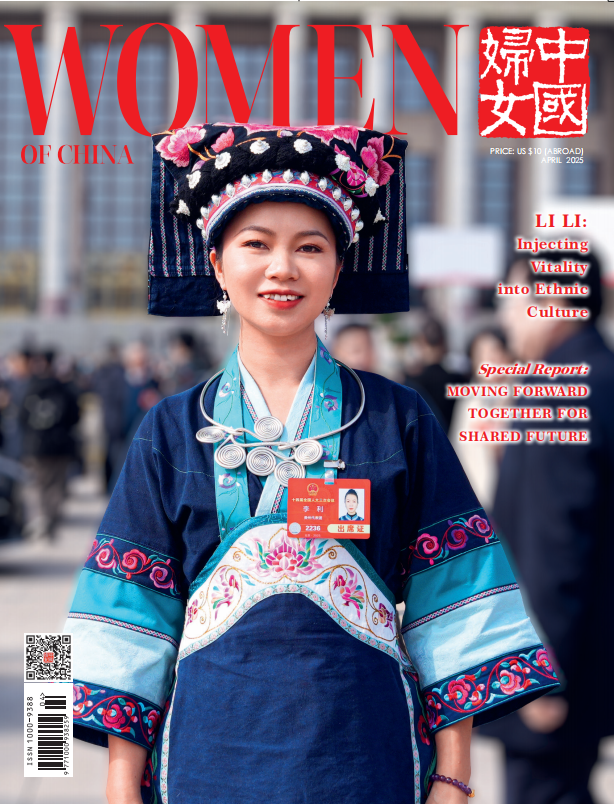
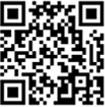

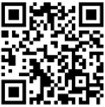


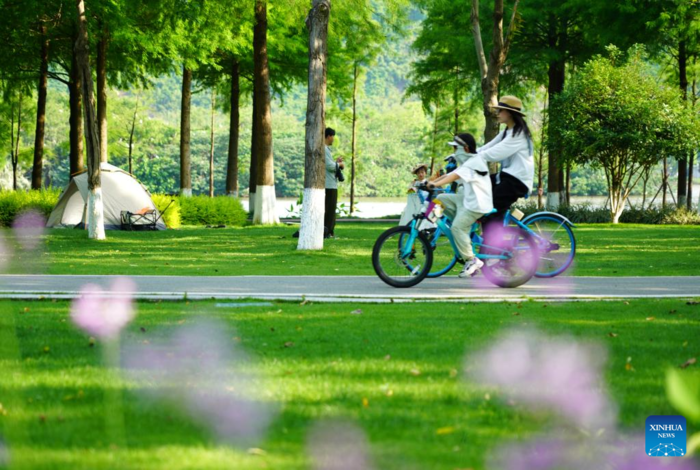
.jpg)

 WeChat
WeChat Weibo
Weibo 京公网安备 11010102004314号
京公网安备 11010102004314号